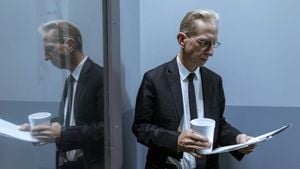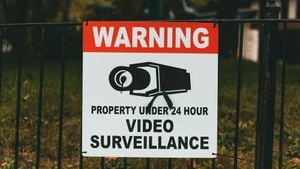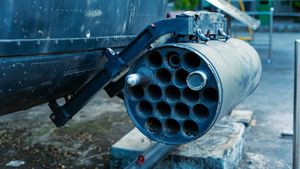The Boeing Starliner spacecraft is currently facing uncertainties as NASA and Boeing investigate the issues surrounding the capsule's first crewed test flight, which took place earlier this summer. The spacecraft was originally intended for its first crewed mission to the International Space Station (ISS) no earlier than 2025. The situation was exacerbated when NASA made the decision to bring the astronauts on board back to Earth via SpaceX's Crew Dragon due to complications with the Starliner.
NASA astronauts Butch Wilmore and Suni Williams embarked on what was initially planned as a 10-day mission, known as the Crew Flight Test (CFT), which launched on June 5. Despite the launch proceeding smoothly, difficulties emerged during the docking with the ISS on June 6. Five out of 28 thrusters from the Starliner’s control system experienced issues, prompting NASA to send the spacecraft back to Earth without its crew. Instead, Wilmore and Williams have been staying on the ISS to conduct research.
The Crew-8 mission, which has been on the ISS for about seven months, involves astronauts Matthew Dominick, Mike Barratt, and Jeanette Epps. They have kept up with space biology research and lab maintenance as they await the arrival of their replacement crew. Weather conditions off the coast of Florida are being closely monitored, as they are affecting the planned splashdown of the Crew-8 mission, which is tentatively scheduled for October 18.
Wilmore and Williams are expected to return to Earth on the Crew Dragon capsule as part of the Crew-9 mission. This change of plans necessitated cutting two slots on the Crew-9 mission to make room for the Starliner astronauts. Currently, they are joined by astronauts Nick Hague and Aleksandr Gorbunov, who arrived on the ISS earlier this week.
NASA is yet to establish when the next crewed mission for Starliner will be possible. An official statement highlighted, “The next crewed mission will be determined once there is clarity on Boeing’s path to system certification.” This system certification is under review following the propulsion issues experienced during the initial test flight and prior uncrewed missions. These issues have been problematic since 2019, indicating potential flaws within the system.
Starliner has been experiencing repeated issues, affecting its certification process and delaying its operational use. Boeing was optimistic these problems were resolved prior to flying with astronauts, but it has now become apparent they are still facing significant obstacles.
Looking forward, NASA has scheduled its SpaceX Crew-10 mission, aiming to launch two NASA astronauts alongside two from the international space partners for continuation of ISS operations. The Crew-9 mission’s timeline places Wilmore and Williams expected return around February 2025.
The effects of the delays are accumulating as Congress is closely monitoring the progress of both Boeing and SpaceX with their respective spacecraft. NASA has also publicly called for full accountability and transparency from Boeing moving forward.
With multiple missions dependent on the success of Boeing’s Starliner and SpaceX's Crew Dragon, the timeline for astronaut travel to and from the ISS hangs precariously on the results of this investigation and necessary adjustments for future flights. Analysts and stakeholders are awaiting the results from NASA and Boeing’s determinations to see if Starliner can meet the certification requirements to perform operational ISS missions.
The broader space community looks forward to updates on the situation, particularly as the continuing issues with the Starliner could impede future missions involving not just crewed flights, but also cargo resupply missions necessary for sustaining the ISS's operational capabilities.
Overall, the future of Boeing Starliner and its role within NASA's commercial crew program is still hanging by a thread, with many questions remaining. Until then, the astronauts on the ISS continue to work diligently, pushing the boundaries of science and exploration even as they await their flight home.



